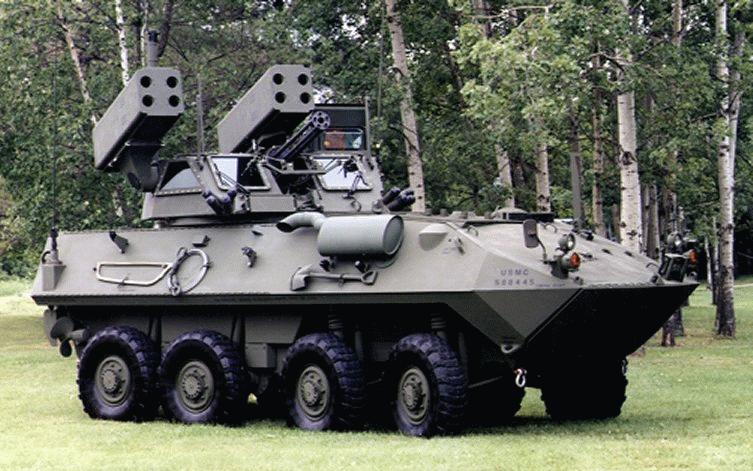- Reaction score
- 12,219
- Points
- 1,160
NavyShooter said:So, the problem there is that C-RAM is very limited in range. (~2-3km at most I think) and very limited in magazine space (1583 rds) so while it might cover a small bubble of battlespace, it's also not a system that I thing belongs anywhere outside of a FOB or a larger base. It's not really designed as a field deployed system.
The *nice* thing about the C-RAM is that it's all one piece, a flat-bed with both a search and track RADAR integrated, and a built-in gun system.
-Stop-gap of Shoulder fired Stingers gets an initial capability at the tactical level. Issue one to every LAV.
-Follow up with a short-medium range AA missile on a vehicle mount with a better sighting system, think Avenger, or Chaparral, keep this with the Battalion CP
So far, we're not into anything integrated, just stand-alone equipment and vehicles that can be attached to give a local capability for AA.
Either of those would be a big step in the right direction, but to bring in an integrated AA suite would be the ideal....something that sockets into the 'system of systems' and gives a medium-long range capability.
NS
And I think that is where the NASAMS system comes into play
NASAMS is renowned for its
use of the Raytheon AMRAAM missile,
but is furthermore operational with
command and control of a range of guns
and short and medium range missiles,
such as e.g. L-70 guns, RBS 70 and HAWK.
It has also proven interoperability with
directed-energy weapons (DEWs) and
longer range systems, such as Patriot.
A total of eleven nations have acquired
the KONGSBERG command and control
solution adapted to their requirements.
The Syste m
A standard NASAMS unit has a modular
design comprising a command post FDC,
an active 3D radar AN/MPQ-64F1 Sentinel,
a passive electro-optic and infra-red
sensor and a number of missile canister
launchers with AMRAAM missiles.
Normally, four NASAMS units are
netted in a battalion network.
The system is tied together with a
uniquely designed ”hard-real-time”
communication network to ensure
minimum latency over large distances
for maximum performance of the
AMRAAM missile.
This modular design permits mission
oriented task force organization of
NASAMS, allowing the operators to
maximize the effect of the components
and tailor the system to the task
https://www.kongsberg.com/en/kds/products/groundbasedairdefencesystems/nasams/
Click on the NASAMS - Air Defence System link embedded in the link above.
It is a distributed modular system that links dispersed gun and missile modules over a wide area.
Defends a large geographical area
The radar and launcher elements can be
deployed over a large area separated by
up to 25 kilometres, providing an extended
coverage with few elements.
Dispersed elements increase its survivability against
enemy air and ground attacks.



